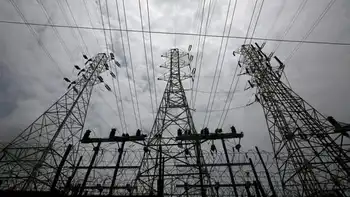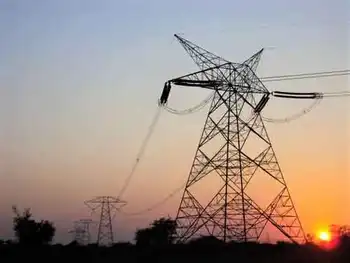Electricity use leaps in sweltering heat; Companies report record usage levels
WISCONSIN - Customers seeking relief from the heat July 17 drew on record amounts of electricity in Wisconsin and across the Midwest, utility company officials reported.
As the unceasing hum of air conditioners reached its crescendo in the late afternoon, customers of We Energies pulled in 6,392 megawatts of power, topping the previous record set Aug. 21, 2003.
About the same time, Wisconsin Public Power Inc. reached a record demand of 965 megawatts, Wisconsin Public Service Corp. hit a record 2,425 megawatts, Alliant Energy Corp. peaked at 2,973 in its east control area, and Midwest Independent Transmission System Operator Inc. topped out at 131,527 megawatts, according to the companies.
The Midwest system is a wholesale energy marketplace serving utilities throughout the region. Electricity producers and providers buy and sell power through the market.
Some of those records might have been surpassed later in the day, before the temperature and demand moderated.
During past heat waves, the spikes in electricity demand caused utilities to ask customers to cut back on consumption through the providers' load management programs. Officials reported that they were able to maintain the electricity supply without such measures and that the system kept up with the demand.
"We are well-prepared for this type of situation," said John Bear, senior vice president and chief operating officer of the Midwest system.
A megawatt of electricity is enough to power about 800 average homes on average days.
July 17, however, was far from average; 15 degrees hotter than average in Milwaukee, in fact. The high of 96 around 2 p.m. was short of the record for the day of 98, but temperatures July 17 generated a heat index of 106.7 when combined with the 52% humidity.
The sweltering heat was widespread.
Fierce heat blanketed the nation from the southern Plains to the Northeast. Hays, Kan., topped 100 by early afternoon, and temperatures were likely to exceed 105 through the middle of the week. Oklahoma City hit 102.
In Illinois, state officials made more than 130 office buildings available as cooling centers. Detroit cranked up the air conditioning in 11 of its libraries and invited the public to take refuge from the heat. In Kentucky, Louisville officials offered free fans or air conditioners to those in need.
There were no immediate reports of any heat-related deaths.
Relief from the heat, the kind that does not require an extension cord, arrived in some parts of Wisconsin late Monday afternoon, in the form of severe thunderstorms.
Strong winds in Sheboygan County flipped a semi-tractor trailer at Highway 23 and I-43 northeast of Kohler and downed trees and power lines across the southern part of the county, according to storm reports from the National Weather Service. Wind gusts in excess of 70 mph and nickel-sized hail were also recorded.
Related News

India is now the world’s third-largest electricity producer
NEW DELHI - India now generates around 1,160.1 billion units of electricity in financial year 2017, up 4.72% from the previous year. The country is behind only China which produced 6,015 terrawatt hours (TWh. 1 TW = 1,000,000 megawatts) and the US (4,327 TWh), and is ahead of Russia, Japan, Germany, and Canada.
India’s electricity production grew 34% over seven years to 2017, and the country now produces more energy than Japan and Russia, which had 27% and 8.77% more electricity generation capacity installed, respectively, than India seven years ago.
India produced 1,160.10 billion units (BU) of electricity–one…




